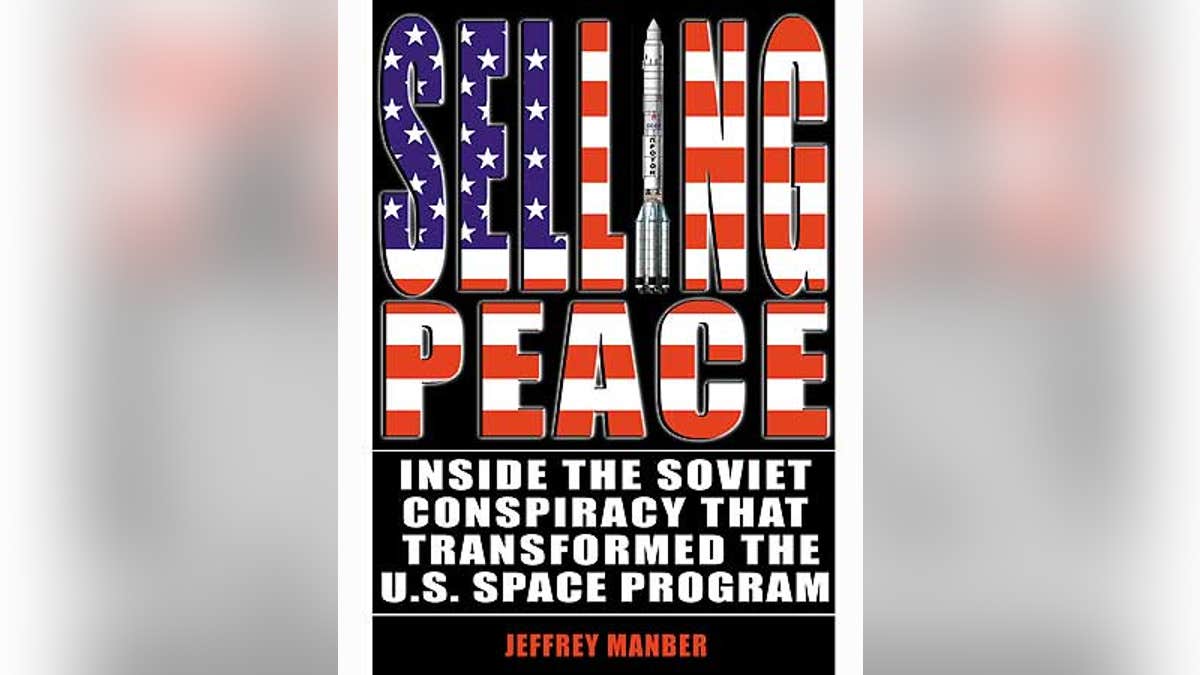
Selling Peace tells, for the first time, the inside story of Russia's marketing of their space program to the West (Apogee Books)
From 1994 to 1998 seven NASA astronauts lived aboard Russia's Mir space station.
NASA viewed this program as a collaboration; the Russians viewed America as a customer. And Jeffrey Manber was the US representative of RKK Energia, the company that owned the Mir space station. In this exclusive excerpt from Apogee Books' Selling Peace, he recalls the cultural clash that happened when his boss came to visit from Moscow.
With Shuttle-Mir cooperation imminent, RKK Energia president Yuri Semenov made the journey to Florida to witness the first of several shuttle launches. He would arrive at Cape Canaveral with a delegation of senior advisors, including RKK Energia board members and top program managers. The make-up of the group reflected wonder at an improbable dream being realized.
Their space station having narrowly escaped the budgetary death of the Russian space shuttle, Mir was now the pivotal center for the American space program. Semenov wanted his closest supporters to experience the moment, and at the same time, he needed key engineers close by in the event of an unforeseen crisis.
There was no more jarring component for the well-oiled NASA prelaunch public relations machine than the Semenov delegation dropping into Cape Canaveral. The Russian's deeply held notions of ownership, pride and tradition went against the collective governmental experiences of those planning the shuttle launches. Every NASA representative, from the driver of our bus to the Mission Control launch director was forced to confront a situation never even contemplated; that the U.S. space shuttle sitting out there on the launch pad was programmatically and politically tied to a space station that — legally or by fiat — belonged to a Russian company.
The General Director didn't help himself in the eyes of the Americans. He behaved at the Cape much like Peter the Great inspecting the troops. NASA at first treated the Energia delegation no different than other visiting foreign contractors, a delegation to be politely hosted, but one certain not to interfere with the NASA "show" in any manner.
That was a mistake quickly brushed aside. Semenov's delegation would travel in their own van, not sharing a bus ride with other visitors. That decision alone was a bureaucratic struggle. The General Director would have access to "his" cosmonauts, in a manner consistent with Russian tradition, not NASA policy. Nor would the space shuttle be launched without the final green light from Valery Ryumin, after consulting with TsUP in Kaliningrad and finally his boss Yuri Semenov. Incredulously, then begrudgingly, and occasionally with appropriate grace, NASA relented.
But more than once a NASA shuttle team member or public affairs officer professed feeling soiled by having to work on a program so identified with "this space peddler," as one suntanned public affairs officer called Semenov. There were bruised feelings percolating throughout NASA. Was Semenov somehow responsible for the $400 million to be paid for using Mir?
Rumors flew that the money was ending up with the mafia, or lavish homes for key officials. Articles were written with an unexpected vengeance about the supposed corruption of the Russian side, as if the injection of money into NASA's international programs poised a threat in and of itself.
STS-71 carrying cosmonaut Sergey Krikalev was the first shuttle to usher in the new era, referred to by NASA as Phase One, and the Russians celebrated jubiliantly. Moments after Atlantis safely blasted into orbit, they produced vodka, cups and juice carefully stored in our van and toasted, with great relief, the successful launch. Energia had worried about shuttle reliability, so the post-launch toast was more emotional than usual.
What an uproar that swept through NASA!
"The drunkards in broad daylight, swilling down their vodka!" Drinking at the viewing stand solidified many prejudices regarding the Russians and their rumored alcohol habits. Somehow, someone may have gotten to Goldin and explained.
For a later flight — I believe it was STS-72, which carried Vladimir Syromiatnikov's docking unit to Mir — NASA administrator Dan Goldin shocked the industry by joining Semenov and Koptev in the celebratory post-launch toast. The sight of Goldin and Semenov standing together in the bright Florida sun, toasting with vodka-filled plastic cups while aides nervously clucked about PR repercussions, was probably the finest moment between the two men.
For Semenov, the space business was about working every day on the edge of what humans can achieve. There will be failure, yet when the space gods have been kind, you celebrate.
For the first time the inside story of Russia's marketing of their space program to the West is chronicled by one who was there. In Selling Peace: Inside the Soviet Conspiracy that Transformed the U.S. Space Program, the colorful tales are told, warts and all.
